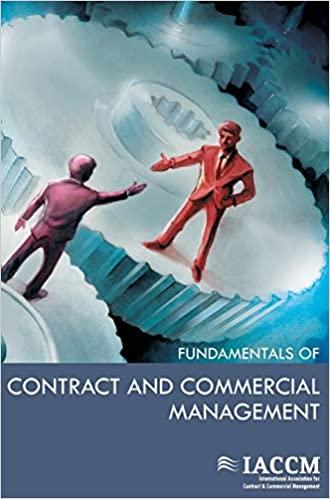Question
CLASSICS IN AUSTRALIAN LEADERSHIP MANAGING THROUGH CRISIS. (Adapted by Dr. R.L. Compton from an original article by Roy Kriegler and Grant Stendal, as published by
CLASSICS IN AUSTRALIAN LEADERSHIP MANAGING THROUGH CRISIS. (Adapted by Dr. R.L. Compton from an original article by Roy Kriegler and Grant Stendal, as published by the National Times.) Philips in Victoria was experiencing severe state problems and falling productivity levels. Management was increasingly concerned over inadequate quality control, poor labour relations and an unsettled workforce with low morale. Compounding this, was an annual labour turnover of 120 percent, rising labour and capital charges and significant tariff reductions. Adopting the participative approach of its parent company in Holland, Philips management held protracted discussions with its workers and their unions. They jointly decided that a massive work-restructuring program should be implemented. Radical changes to work methods, the physical and social environments and the decision-making procedures in the factory were instituted. The old production lines were a major source dissatisfaction among the workers. Each operator placed a small number of electronic components in a television set which moved past on a conveyor belt. This made it boring, unchallenging, lonely and inordinately tedious work. The work cycle was repetitious, required little skill and lasted only a few seconds. There was no freedom to move about and the pace of work was dictated by the line. Friction was often generated between operators, because a mistake by one person meant that the next in line had to correct it. Little social interaction was possible because of the layout of the line. Supervisors acted as overseers, controlling the workers. Under the new system, television assembly was broken down into half a dozen or so major components, such as the cabinet chassis, remote control panel and wiring. The old assembly lines were dismantled and workers formed themselves into small self-contained production teams. These teams began to operate with a high degree of autonomy. Aided by engineers, they remodelled their work place. Some teams designed new production machinery, while others devised innovative production processes. They also monitored and controlled their own production output levels of efficiency and product quality. As well as testing and fixing faults, the teams also were involved in training, hiring and firing. Team members have become multi-skilled so they can work in different ways. They can choose to assemble the component entirely on their own (this requires a work cycle of about 30 minutes - a much longer time than an assembly operation under the old system) or alternatively rotate the individual tasks between members.
Page 2 of 2 Stocks of each team's finished components are held in buffer storages. This makes each team less dependent on the activities of other groups. The advantages of this type of assembly line are twofold. The worker is freed from the monotony of the assembly line and now uses a wide range of skills and abilities. The company benefits because product quality if of a high standard and because work restructuring has allowed production to be flexible and thus highly responsive to market fluctuations. Under the old assembly line system, it took up to two days to change over from producing one television model to another. Semi-autonomous work teams, however, have created a multi- skilled workforce capable of changing from the production of 14-inch portable television to 26-inch remote control models within minutes. On the recommendations of workers' committees, plant layout has been redesigned to be cleaner, safer, more comfortable and attractive. Also more abatement devices, temperature control, improved lighting and ventilation have been installed. Serious attempts have been made to get away from a drab factory environment by allowing staff to redecorate their workshop. Pot plants and photographic murals have been purchased. Workers may take coffee breaks as frequently as they like. Philips has also abandoned the traditional pyramid organisational structure and introduced a matrix structure which provides efficient problem-solving and improved communication. Although the changes cost Philips a great deal for additional equipment and new technology, this outlay was quickly recouped by improved productivity. Before the change program, the Melbourne plant was operating at 50 percent efficiency compared to other Philips factories around the world. Questions 1. What drivers for change do you believe caused Philips to move to a more participatory style of leadership? 2. What style of leadership has Philips practiced in the past? Which style have they moved towards?
Step by Step Solution
There are 3 Steps involved in it
Step: 1

Get Instant Access to Expert-Tailored Solutions
See step-by-step solutions with expert insights and AI powered tools for academic success
Step: 2

Step: 3

Ace Your Homework with AI
Get the answers you need in no time with our AI-driven, step-by-step assistance
Get Started


